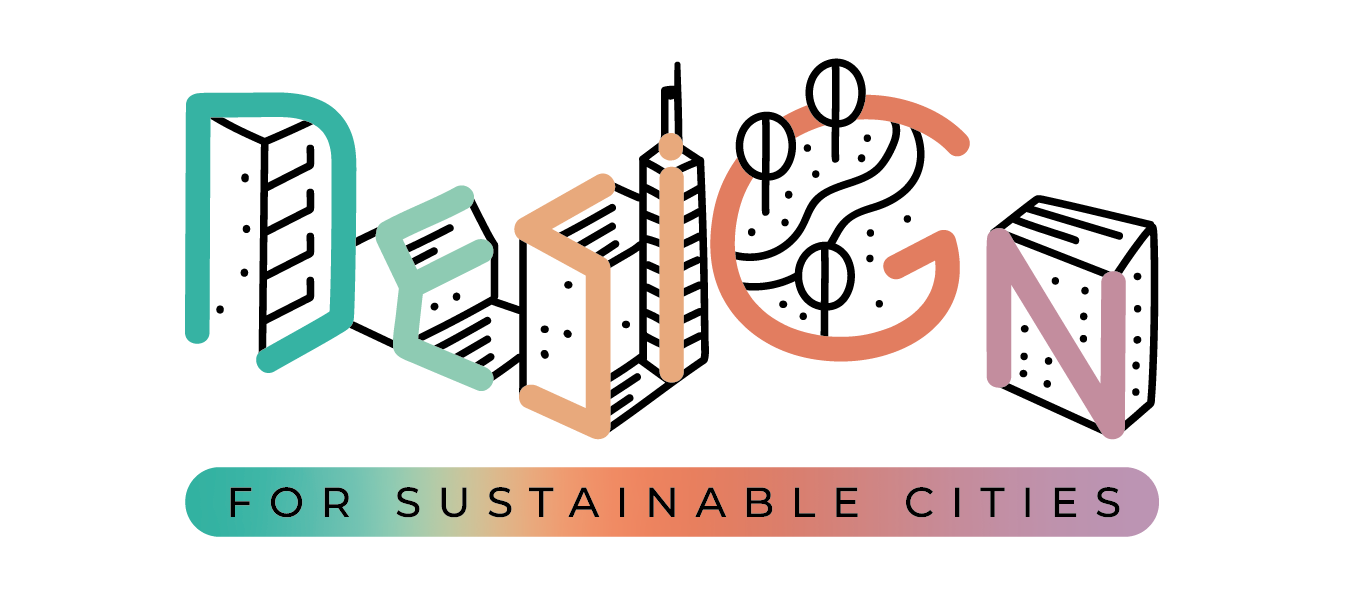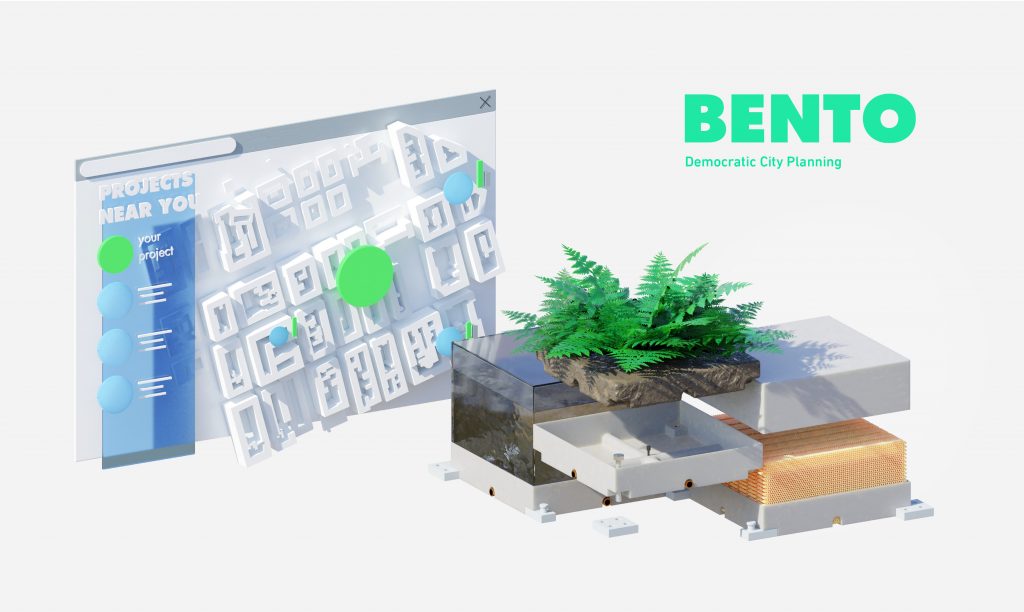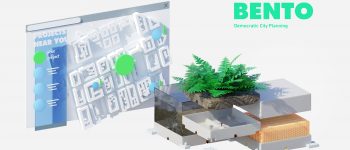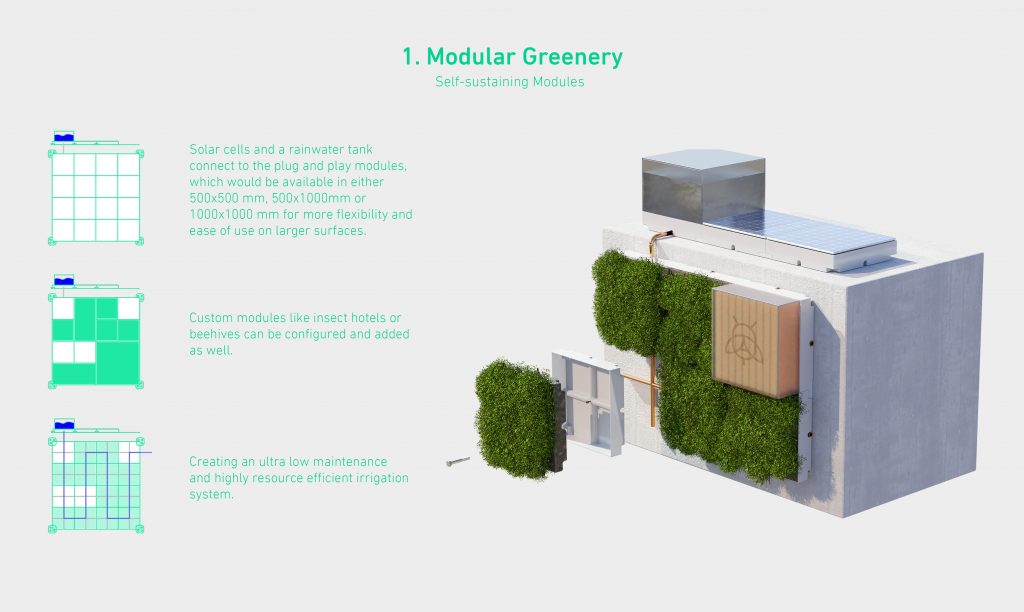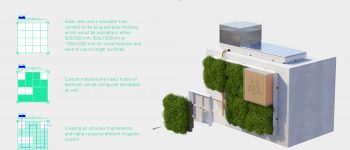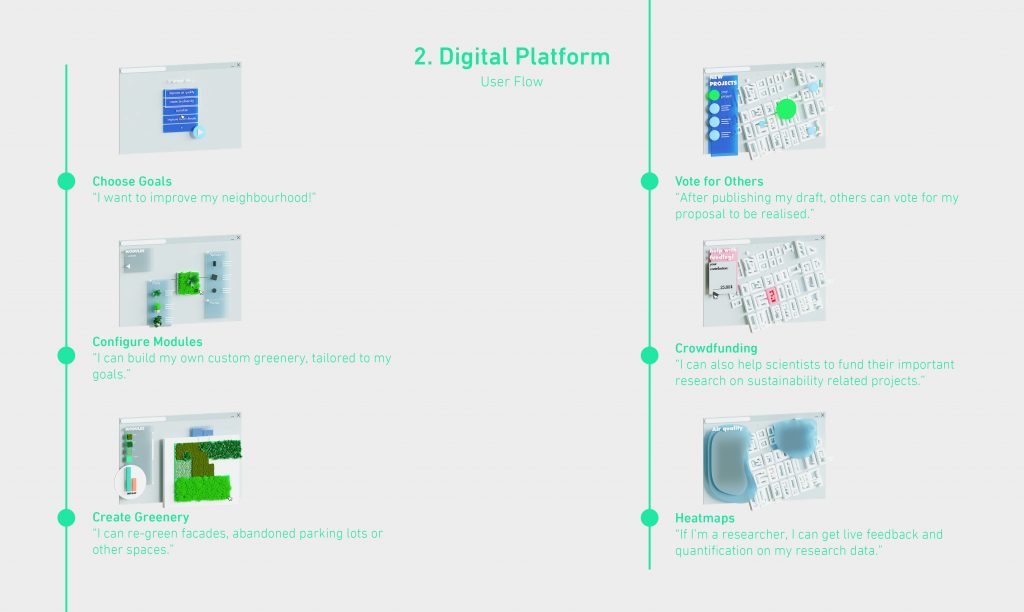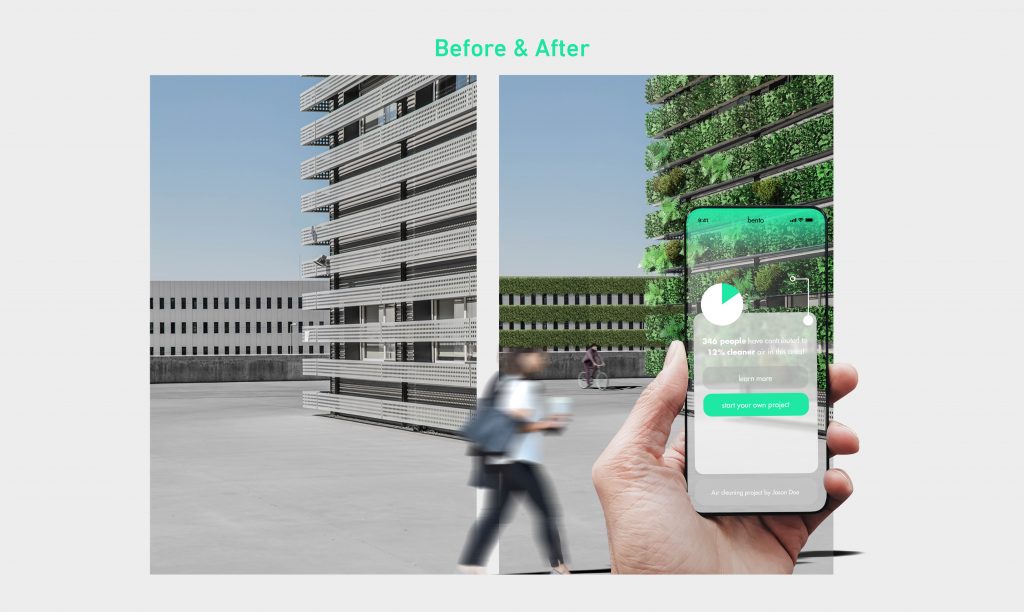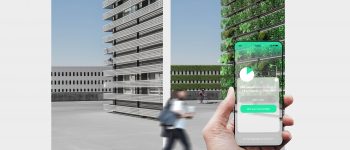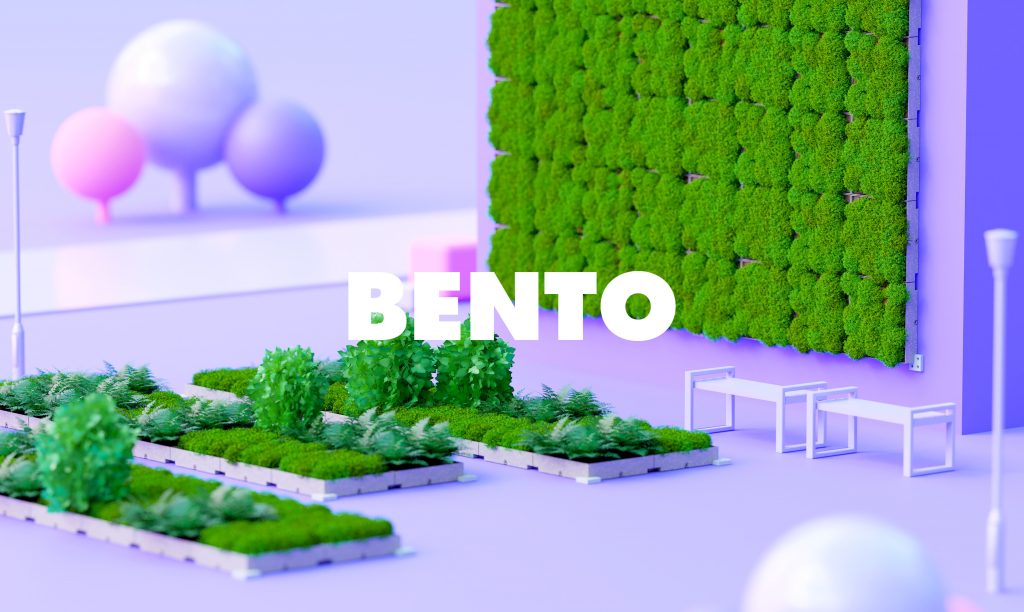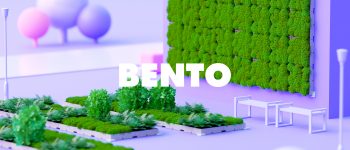Until 2030, more than 60% of the world’s population will live in increasingly crowded cities. The rising demand and need for living spaces make greenery disappear from the city, as we built concrete jungles around us. Increased air pollution and losing biodiversity in the process are direct consequences of lack of greenery in our cities, among many others. Not having enough green spaces around us is not only proven to be linked to physical, but also mental health issues.But luckily, awareness for these issues is now also rising, there are more and more people ready to take action and contribute to make a change. This is why we believe that it is a community effort to combat those changes and that there is a need for a transparent and inclusive way to create a greener city.
Bento includes modular greenery and a digital platform that encourages citizens to get informed and be involved in shaping the cityscape. This platform will also be used by professionals like city-planners and scientists to fund and conduct research to improve the aforementioned issues. Through this, we can leverage everyone’s expertise more democratically and efficiently.
Part 01 – Modular Greenery
Bento module range consists of a base platform that can be configured to contain
-soil and plants
– an irrigation system
– insect hotels
– solar panels
The modules would be available in either 500x500mm,500x1000mm or 1000x1000mm for more flexibility and ease of use on larger surfaces. Solar cells and a rainwater tank connect to the plug and play modules, creating ultra-low maintenance and a highly resource-efficient irrigation system. Custom modules like insect hotels such as beehives can be configured and added as well.
Part 02-Digital Platform
The digital platform is the democratic center for collaboration. It can be used to create projects, learn about others, fund your favorite projects, report issues, and see heatmaps of your city.
The user journey starts with choosing a goal, such as “improving the air quality around my neighborhood”.The AI-powered configurator then guides the user to pick the best place for this goal. By simply just dragging and dropping the greenery modules, users can re-green facades, abandoned parking lots, or other spaces. If the platform is used by a researcher, the greenery modules can be customized by adding sensors to collect data for specific needs. After publishing the project draft, other civilians and the municipality can vote or crowdfund the project. The more projects are created, the more data will be collected through the platform, which then would create heatmaps to inform civilians and researchers.
Improving the quality of life in our cities is now in our hands, too.
1-Democratizing decision making: By bringing every stakeholder to the same (virtual) table, each party can immediately see and react to the needs and initiatives of one another.
2-Connecting professionals with civilians: Researchers highly benefit from exposure and recognition in the public. It raises awareness for important issues and can generate much needed funding. On the other hand, the public benefits from their research and general knowledge.
3-Empowering citizens: Until now, most of the responsibility for shaping green spaces is held by the municipality. Giving citizens a channel to raise their interest and get creatively involved, is in both parties’ interest.
